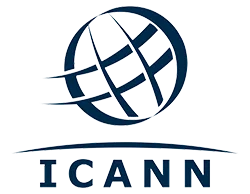| CARVIEW |
Select Language
HTTP/2 200
date: Mon, 14 Jul 2025 13:10:37 GMT
content-type: text/html; charset=utf-8
x-ratelimit-remaining: 195
x-ratelimit-requested-tokens: 5
x-ratelimit-burst-capacity: 200
x-ratelimit-replenish-rate: 100
vary: Accept-Encoding
x-frame-options: SAMEORIGIN
referrer-policy: origin-when-cross-origin
content-security-policy: frame-ancestors *.icann.org
strict-transport-security: max-age=48211200; preload
cf-cache-status: DYNAMIC
set-cookie: __cf_bm=zUOhaQODdQMUzSIIAadaOO.ZFX76L0nTiG28TgPYBtU-1752498637-1.0.1.1-Cr4pR3EyLtSeyGCBJIZMT_i7xbxRv7YYyTYJyQGakLrUP39hLdVDmkRKLzqR0uUyJquQK1JwNfQgRyGLiQq8NaSQr_ziCEP1blQrNz_RBnM; path=/; expires=Mon, 14-Jul-25 13:40:37 GMT; domain=.icann.org; HttpOnly; Secure; SameSite=None
server: cloudflare
cf-ray: 95f142db9da71712-BLR
content-encoding: gzip
Acronyms and Terms
ICANN Acronyms and Terms
ICANN has hundreds of acronyms and terms, which can be confusing. We created this multilingual tool to help explain what these terms mean and facilitate your work within the ICANN community.
ICANN Acronyms and Terms
Type in the acronym or term you are looking for in the Search bar below.
In addition to English, translated versions of acronyms and terms are also available in Arabic, Chinese, French, Russian, and Spanish. Links for each language are located in the top right of the page.
Click the first letter of the term you are looking for to search alphabetically.
Do you have feedback on the definitions or the terms? Send us an email to: [email protected].
I
Internet Protocol address(IP address)
A numeric value that uniquely identifies a device attached to the Internet. The Internet Protocol (IP) uses IP addresses to route message packets to their intended destinations.
The Internet Protocol has two addressing schemes.
- Internet Protocol version 4 (IPv4) addresses have a length of 32 bits, which allows for just over four billion unique identifiers. IPv4 addresses are written as a sequence of four decimal values ranging from 0 through 255, separated by dots. A typical IPv4 address looks like this: 192.0.32.7.
- Internet Protocol version 6 (IPv6) addresses have a length of 128 bits, which allows for 340 undecillion unique identifiers. IPv6 addresses are written using sequences of hexadecimal values, separated by colons. A typical IPv6 address looks like this: 2620:0:2d0:200::7.
An Internet device can have both types of addresses simultaneously. Having both address types enables the device to send and receive messages using IPv4 or IPv6.


